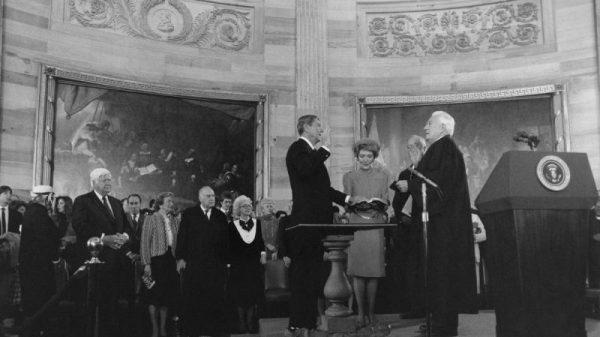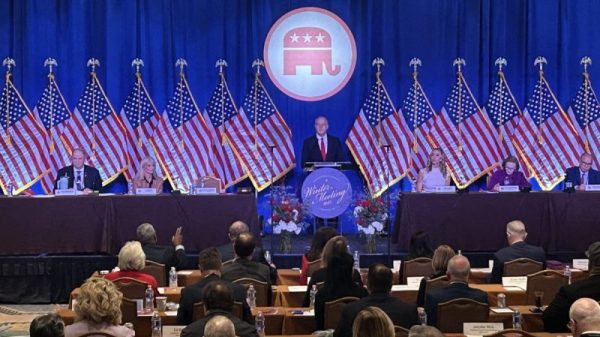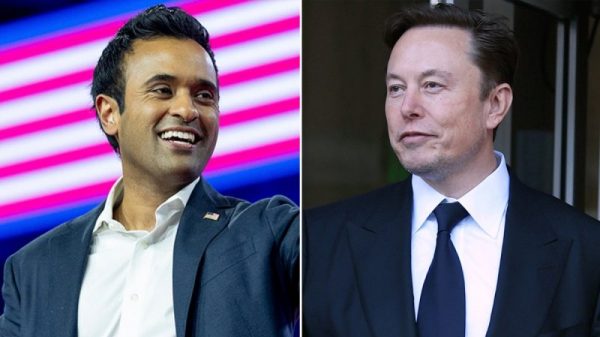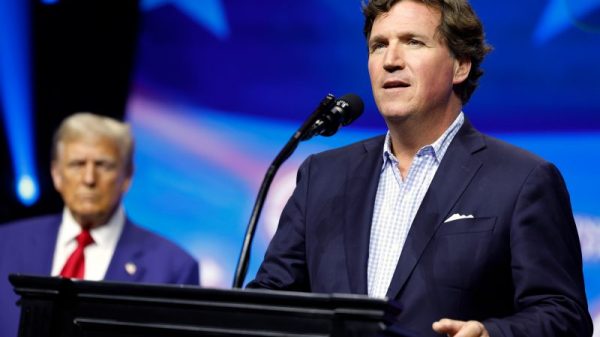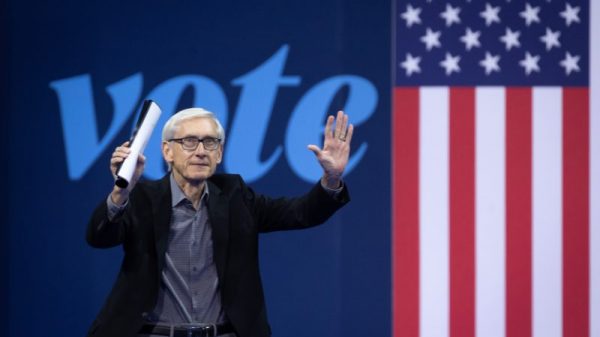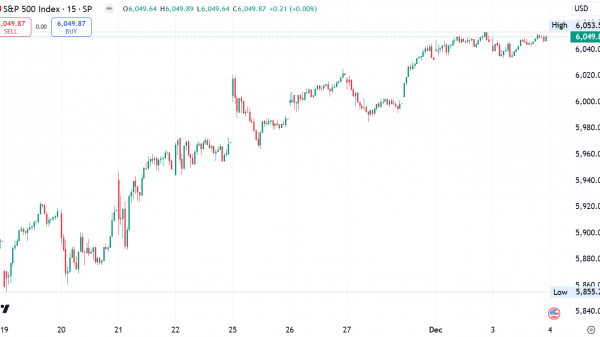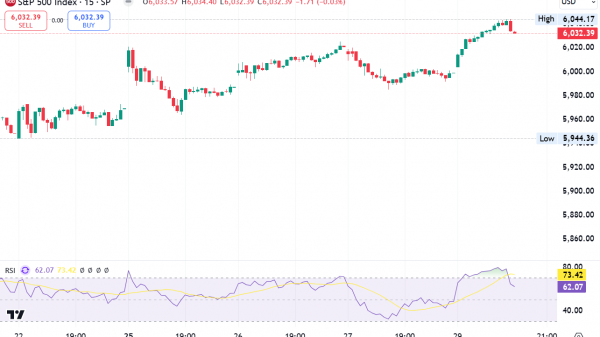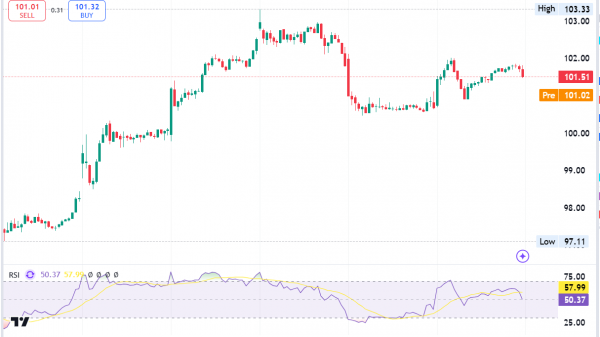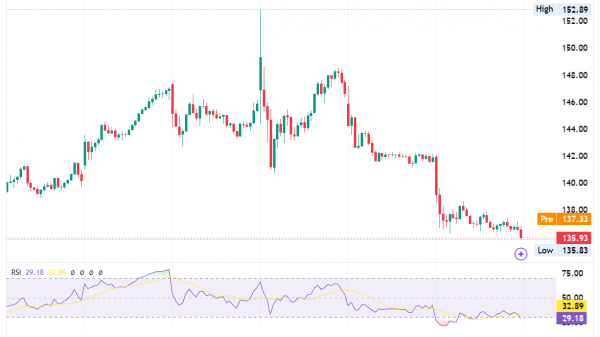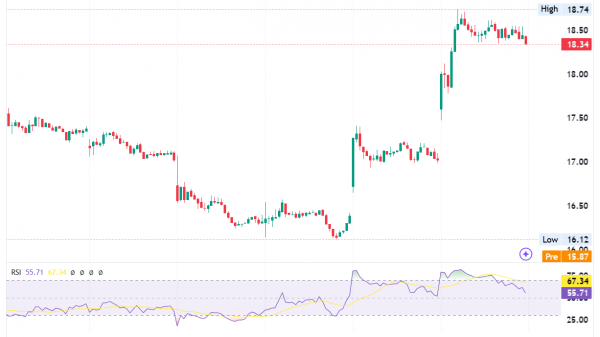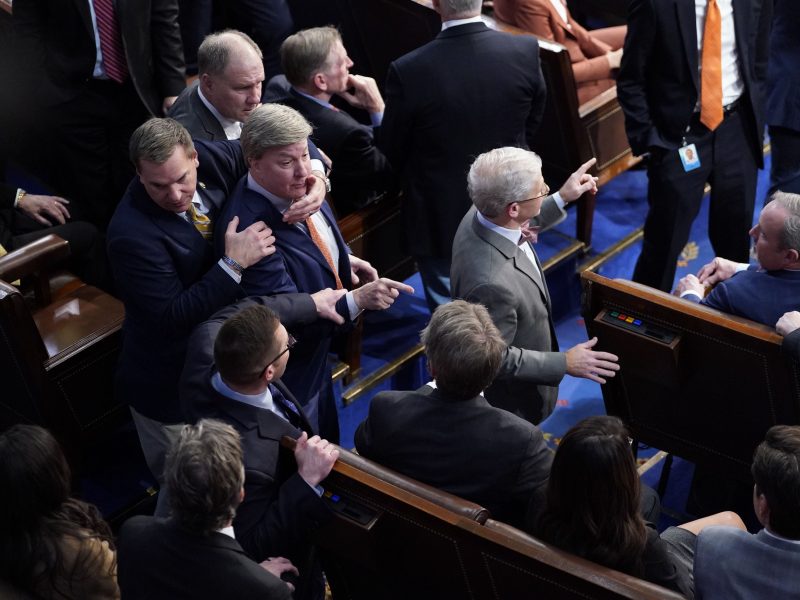It is probably not terribly useful to draw sweeping conclusions from Sen. Markwayne Mullin’s demand Tuesday that a witness at a Senate hearing stand up and fight him. Mullin’s background is atypical for a senator, including a brief stint about 15 years ago during which he did mixed-martial arts fighting. The witness, meanwhile, was the head of the Teamsters union; his willingness to goad Mullin (R-Okla.) into the challenge was probably also atypical for someone appearing on Capitol Hill.
We might also be cautious about the weird, probably overheated interaction between Reps. Kevin McCarthy (R-Calif.) and Tim Burchett (R-Tenn.), also on Tuesday, in which the latter accuses the former of elbowing him. Or the scuffle in January when the Republican Party was trying to elect McCarthy speaker in the first place. These were all isolated incidents, explainable in isolated contexts.
But there’s an undeniable thread that links them, an acceptance, however slight, of the idea that physical violence has a place in the resolution of disputes. Should this pattern continue — or accelerate — it would mirror other countries in which democracy is eroding. Including, at one point, the United States.
The question of the extent to which Americans accept political violence in general has been lingering for years now. The riot at the U.S. Capitol on Jan. 6, 2021, crystallized those questions, given that it was an overt collapse of a democratic process — the 2020 presidential contest — into a violent effort by supporters of Donald Trump to help him retain power.
In its recently released measure of support for democracy in the United States, PRRI published data evaluating the extent to which Americans believed that violence might be a viable mechanism for affecting change. A third of Republicans indicated that “patriots” might need to resort to violence to right the national ship, up since 2021. But that sentiment also was up among Democrats and overall.
Of course, we’re talking here not about broad embrace of political violence but the specific violence or acceptance of violence that might occur on Capitol Hill.
American University professor Thomas Zeitzoff, who studies political violence, recently released a book titled “Nasty Politics,” evaluating the extent to which countries use “nasty” political tools (from aggressive language to outright violence) to deploy or secure power. For the book, he looked at New York Times articles since the 1850s to determine how often the paper reported stories that indicated the use of nasty political tactics in the United States.
There was a surge at the time of the Civil War (the first vertical shading area below) and again at the time of Trump’s election in 2016.
In the Civil War era, outright violence was common on Capitol Hill. In her 2018 book “The Field of Blood,” Yale University professor Joanne Freeman tracked the number of violent incidents in Congress in the years before and after that conflict.
“In those times, … armed groups of Northern and Southern congressmen engaged in hand-to-hand combat on the House floor. Angry about rights violated and needs denied, and worried about the degradation of their section of the Union, they defended their interests with threats, fists and weapons,” she wrote. “When that fighting became endemic and congressmen strapped on knives and guns before heading to the Capitol every morning — when they didn’t trust the institution of Congress or even their colleagues to protect their persons — it meant something.”
“It meant extreme polarization and the breakdown of debate. It meant the scoring of parliamentary rules and political norms to the point of abandonment. It meant that structures of government and the bonds of Union were eroding in real time,” Freeman continued. “In short, it meant the collapse of our national civic structure to the point of crisis. The nation didn’t slip into disunion; it fought its way into it, even in Congress.”
This link between the decline of confidence in institutions and the rise of violence has been measured elsewhere. Writing for the London School of Economics last year, visiting fellows Moritz Schmoll and Wang Leung Ting delineated research showing that connection. They discovered that violent incidents in a country’s legislature were less likely to occur either when a country had a robust democracy — since institutions allowed for peaceful resolution of disputes — or when there was no democracy at all, since autocrats could simply impose their will.
They also found evidence that moments of transition between the two might be ones in which violence rose.
“During a fragile and limited democratisation process in the 1990s, brawls started happening quite regularly in the Duma (Russian Assembly), something unheard of during the Soviet era. After President Putin’s election and the progressive return to a closed authoritarian system, violence subsided,” they wrote. “Turkey, which in the 2000s had relatively high levels of democracy, had only occasional brawls in those years. But after President Erdogan shifted the country onto an increasingly authoritarian path, effectively turning it into an ‘anocracy’ that blends authoritarian and democratic elements, violence in parliaments increased significantly.”
The United States is hovering near a transitional point. The Varieties of Democracy project of the University of Gothenburg’s V-Dem Institute measures national support for the values of liberal democracy, including free and fair elections. In recent years, the United States’ measure of liberal democracy has slipped (albeit subtly). That corresponds to an increase in anti-pluralistic sentiment, within the Republican Party in particular.
There unquestionably is an overlapping sentiment on the American right that is worth mentioning. Not only Donald Trump’s numerous (and increasing) nods at political violence, although those certainly are noteworthy. Instead, it’s useful to consider the explicit embrace of hypermasculine rhetoric on the right. This is an essential element of what unfolds in right-wing media, including on podcasts and social media. It manifests in things like the book by Sen. Josh Hawley (R-Mo.) about “Manhood,” an effort to refocus men on putative masculine values.
This is anecdotal, in part because it’s tricky to measure through a partisan lens. It’s worth noting, however, a widening partisan divide on using corporal punishment with children, a literal measure of one’s willingness to use violence as a corrective measure — albeit within clear boundaries.
Research also shows that corporal punishment correlates to other negative effects later in life, including violent ones.
Again, we’re pretty far down a path from the specific “former MMA fighter challenges Teamster leader to a fight” incident that spurred this line of inquiry. But dismissing that specific incident solely as anomalous means ignoring the other patterns that exist around Congress.
In researching this article, I remembered that YouGov had, for years, slotted Trump’s tweets as president into its poll questions. It suddenly struck me that I didn’t remember seeing how Americans had responded to perhaps Trump’s most notorious social media post, the one in the early hours of Dec. 19, 2020, in which he encouraged his supporters to come to Washington on Jan. 6, 2021. The day would feature a big protest, he said, that would “be wild.”
Six in 10 Republicans said this tweet was “good” or “great.” A lot of this is simply a partisan response to a partisan appeal. But particularly given what followed, does that make it better or worse?

